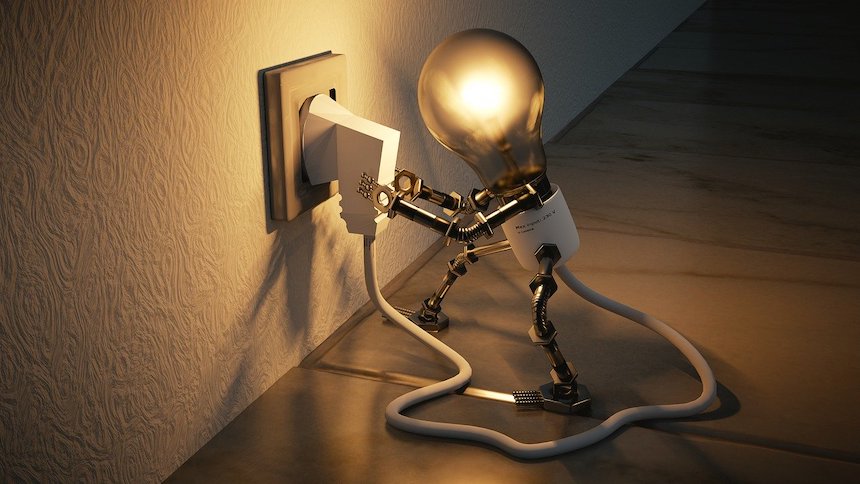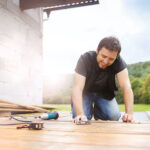
We all depend on electricity a lot more than we’d like to admit. It’s a crucial aspect of everyday life. You need electricity to cook, clean, wash, and even to find entertainment. When things go wrong, people are often dumbfounded about what they can do to help remedy the situation. Knowing a little bit about electricity can help save delicate appliances and prevent unnecessary injury. Here are some home electrical basics.
What Is Electricity, Exactly?
It’s hard to get into the basics of handling electricity and currents without first understanding what electricity is. You’ve probably had your fair share of run-ins with a smaller and safer kind of electricity – static electricity. It’s the reason why doorknobs, socks, and carpets feel like such a bad idea. It’s not harmful, but it’s still electricity.
Electricity is the movement of charge, conventionally seen as going from positive towards negative. Energy is created through a multitude of processes which then travels from the positive side to the negative one. When you’re walking on a carpet with socks on, the small amount of electricity is generated from the friction and transfer of electrons from the carpet to your socks. Once you have a small charge, discharging it at the doorknob is inevitable.
The electronic devices and add-ons in your home rely on a constant current of electricity that comes from the grid. It’s important that you know how different elements of electricity work to avoid causing harm to yourself or electrical appliances.

Electrical Currents and Connections
The flow of electrical charge is called a current. It’s how electricity gets around from one place to another. It relies on a difference in charge and a conductive material between charges. There are two types that might interest you: DC current and AC current. Due to the differences in voltages, different devices will use different kinds of currents for power.
AC is useful for long distances, which is why power plants use them to transfer electricity to your home. On the other hand, DC currents have fewer long-distance uses. Many portable devices will use DC currents for charging and usage. You won’t find yourself in a situation where you can mix them up, but if you do some heavy electrical work, you should probably keep this in mind.
Circuit Breakers and Switches
Currents need to be interrupted from time to time, for safety reasons or otherwise. There are several situations where the flow of electricity needs to be stopped immediately. In case of a fire, you’ll want to be able to stop the circuit and disconnect the electrical current. Many homes have switches somewhere on outside walls near the electric meter which allows for a remote power shut down. In the event of an emergency, this can be utilized and there’s very little risk of additional electrical damage.
Circuit breakers interrupt currents in the event of an electrical overload. Let’s say that you power on a device that is a little high-demand and it overloads the circuit; a breaker will trip. The flow of electricity is interrupted and you can safely move the device or appliance to a new circuit. Then you can turn the breaker on again and continue using something that uses less electricity. However, should the breaker trip again, without being connected to a device, you’re going to want to call in electrical services to help diagnose the problem. This can be a sign of dangerous faults, which can be hazardous to your safety.
Electrical Outlets
You’re probably already familiar with an outlet’s function. They provide instant power to plug-in devices and allow you to use them all-around your home. We use outlets for everything from fridges to vacuum cleaners. Most standard outlets are either 15 or 20-amp compatible. 20-amp outlets can support more powerful appliances without tripping a breaker. Knowing which one is which is crucial for the use of specific devices.
While outlets are pretty easy to use, replacing or fixing them is complicated. You need to be careful that you’ve turned off the adequate breaker before you even start removing the plastic covering. Screwdrivers with current detection can come in handy.
The basics of electricity in a home aren’t all that complicated. There are a few areas that need special attention, but it’s mostly basic physics and common sense. It’s critical that you’re familiar with the basics of your home’s electrical grid, in the event that you need to make changes or repairs to your home’s fixtures. With some standard knowledge, you can be sure that you’ll be able to introduce changes while staying safe from electrocution.
- 5 Tips From Busy Moms for Keeping Kids Stylish - June 11, 2021
- 8 Secrets of People Who Always Have a Clean Home - February 9, 2021
- How To Prepare Your Home for Every Season - January 15, 2021







